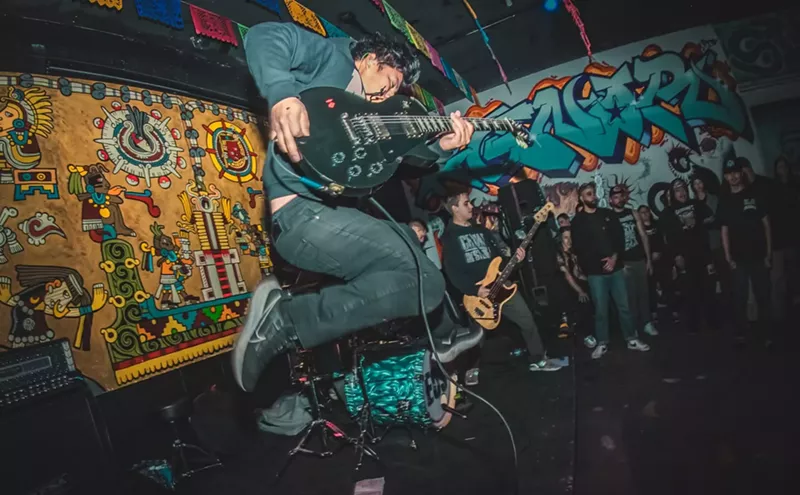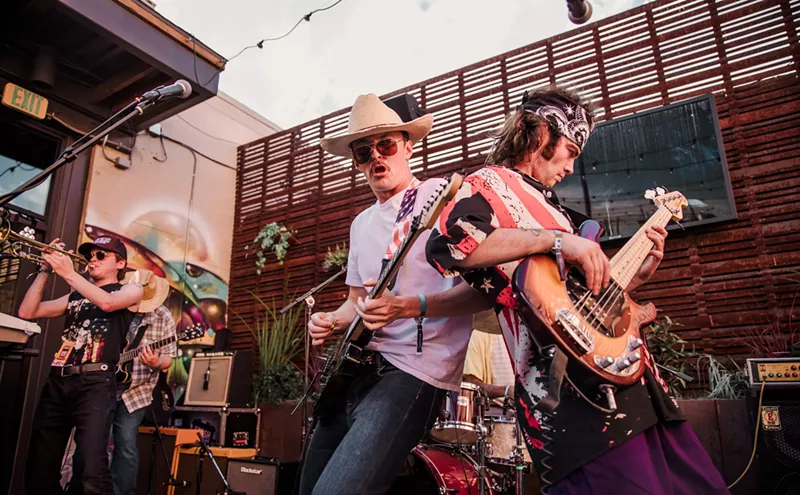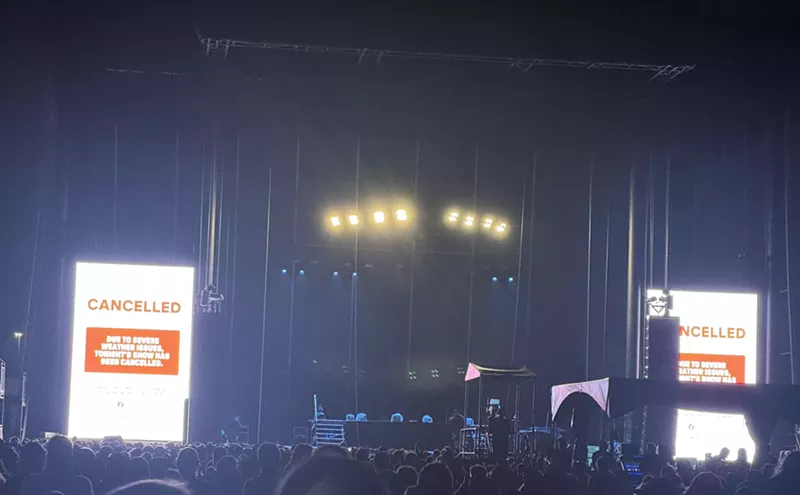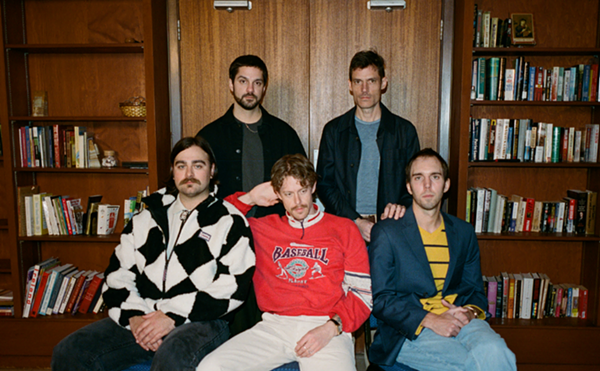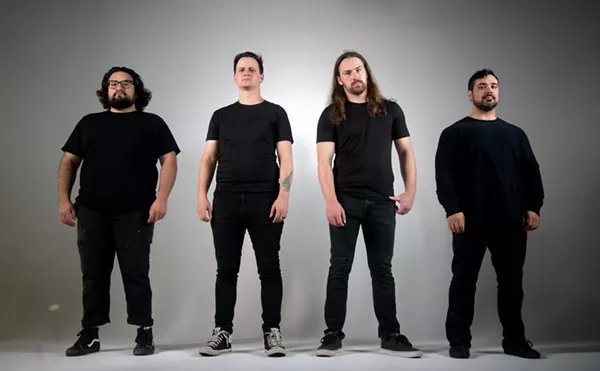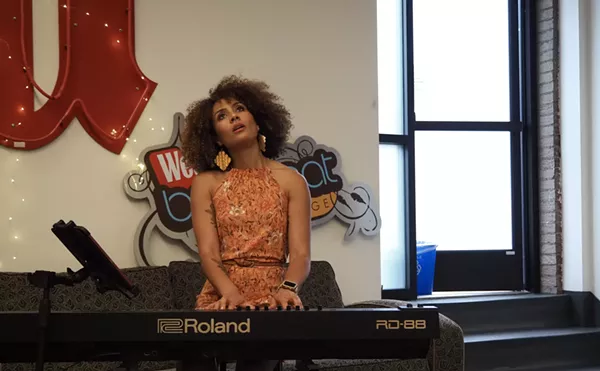For his part, Wessel wanted to document Rice's story, which he did across three sections in ICONOCLAST, a massive, 240 minute film, making its Denver premier this Sunday at the Underground Film Festival (Unitarian Society of Denver, 1400 Lafayette). We caught up with Wessel and talked to him about the documentary and falling out with Rice.
Westword: First, off, what was it about Boyd Rice that made you want to start working on this documentary?
Larry Wessel: Boyd is mysterious and controversial. His two favorite words are "fun" and I think most tellingly "consternation." He seems to upset a lot of people. He makes people squirm, and at the same time, he makes people laugh. He is very adept at spinning a good yarn and with this astonishing gift for story telling, I felt that he was the perfect subject for one of my documentaries.
Was the decision to split the film in three parts something you made from the start, or did it just happen naturally? The move to Denver, especially, seems to mark a decisive chapter.
Storytelling is the single most important element in ICONOCLAST. A good story should always have a beginning, middle and an end, three parts. In the case of the life of Boyd Rice, that chronologically would translate as Lemon Grove, San Francisco and Denver.
Speaking of which, this documentary is massive, 240 minutes, tons of interviews -- what was the editing process like?
It took me over a year to edit the 200-plus hours of footage that I shot. Editing is the most creative part of the process and this is where the real fun was had.
Was it difficult to keep the fly-on-the-wall aesthetic throughout, given the, uh, diversity of views on Boyd's work?
All of my documentaries are populated with people and subjects that I don't necessarily agree with. It is important to me that I never have an axe to grind -- I leave that to propagandists like Michael Moore.
There's also a lot of context here: It doesn't seem the film is exactly just about Boyd Rice, but also about the history of the culture he spawned/was a part of. Was that intentional? This seems especially the case in the second part of the film where Anton LaVey plays a bigger roll.
It doesn't separate Boyd from the culture he grew up in. It is much more than just a documentary about Boyd Rice and explores the last fifty-plus years of American Pop Culture history. Anton Szandor LaVey is one of the film's Unholy Trinity, including Charles Manson and Tiny Tim. These are the three men that Boyd cites as the most influential in his life.
After six years of working on this, has your opinion on Boyd or his art changed?
Yes. I no longer speak to him.
Wait, you no longer speak with Boyd?
That's right.
Was there a falling out after making the documentary, or is it simply because you spent six years working with him?
The falling out came as a complete surprise. He gave me an ultimatum. He told me that I could either be a friend of his, or a friend of Giddle Partridge, but that I could not be both. I told him to go fuck himself. He never called me again. However, he did try to stop the film from being shown at The Melbourne Underground Film Festival. What upset him is that I promoted the MUFF screening with a trailer that included Giddle and Boyd's recording of "Warm Leatherette" as the soundtrack.
You see, Giddle was Boyd's best friend for twenty-plus years until she got engaged to be married. He ended his friendship with her when he first got a close up view of her engagement ring. He reacted to seeing her beautiful ring by rolling his eyes, turning his head and by not being able to perform with Giddle in the recording studio the rest of that day. Instead, Giddle was left alone with recording engineer, Bob Ferbrache to record her parts and Boyd had returned to his bunker to construct a handwritten "Termination of Friendship" letter to Giddle. I found this to be both sad and also incredibly strange.
Hold on, a "Termination of Friendship" letter seems especially interesting, did he hand these out to anyone else you know of? Did you get one?
Although he gave the same "Giddle or me" ultimatum to several other mutual friends, I don't know of anyone other than Giddle getting the "Termination of Friendship" letter.
So, what exactly did he do to try to stop the film from being shown at MUFF?
He wanted me to remove the Giddle and Boyd "Warm Leatherette" trailer on YouTube that I created to promote the Chauvel Cinema screening of the film in Sydney. It was a montage of cars crashing cut to the rhythm of the song (the song is based on the novel Crash by J.G. Ballard). Author Jack Sargeant was scheduled to introduce my film at the Chauvel Cinema and with Jack being an aficionado of Ballard, I thought the trailer would be a big hit.
Then I receive another one of Boyd's ultimatums. Either I remove the trailer from YouTube, or he demands that MUFF not screen my film. The guy who runs MUFF is Richard Wolstencroft, an old pal of Boyd's who directed him in a feature of his called "Pearls Before Swine." Richard emails me, and he is frantic. He sends me a copy of an email he received from Boyd threatening him to remove ICONOCLAST from the MUFF schedule if I don't comply, with Boyd's demand that I remove my trailer from YouTube.
Richard suggested that I exercise what he called "the gentle art of compromise" and remove the offensive trailer. After writing back to Richard and explaining to him that I felt that compromise to me was another word for evil, I decided to take the trailer down and replace it with another one that incorporates a Giddle and Boyd cover of Serge Gainsbourg's "Bonnie and Clyde."
For some reason Boyd did not object to this Giddle and Boyd tune. Go figure. What really irks me is that I spent six years of my life creating this fantastic documentary that is nothing but great publicity for Boyd, and he ends up being a total ingrate. What I have learned about sociopaths is that they are incapable of gratitude. They are people users. Once my documentary was finished and screening in theaters, Boyd was done with me. This was a person that called me on the telephone daily for six years and insisted that I was his best friend.
After all this, who do you think Boyd Rice really is?
It took me six years to understand who he really was. Boyd is a very complex individual. He not only wears many hats, he wears many masks as well. In ICONOCLAST, the many masks are peeled away, and the real Boyd Rice is revealed.
And after all those masks are pulled back, who is the real Boyd in your eyes?
A lonely, cold-hearted, pretentious, hypocritical sociopath.
Follow Backbeat on Twitter: @westword_music



